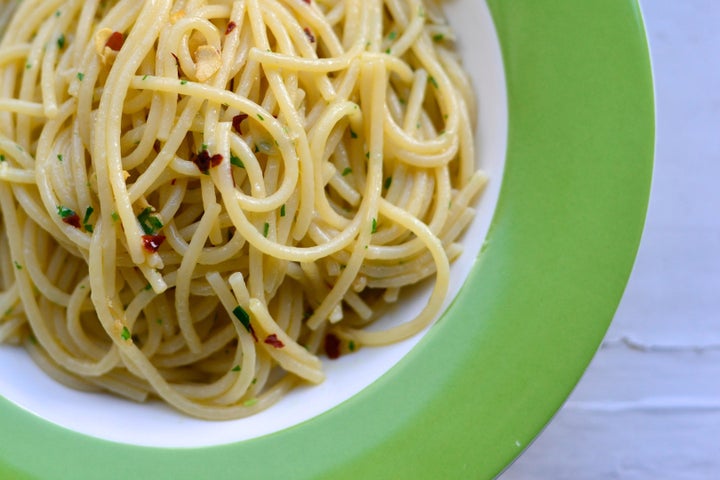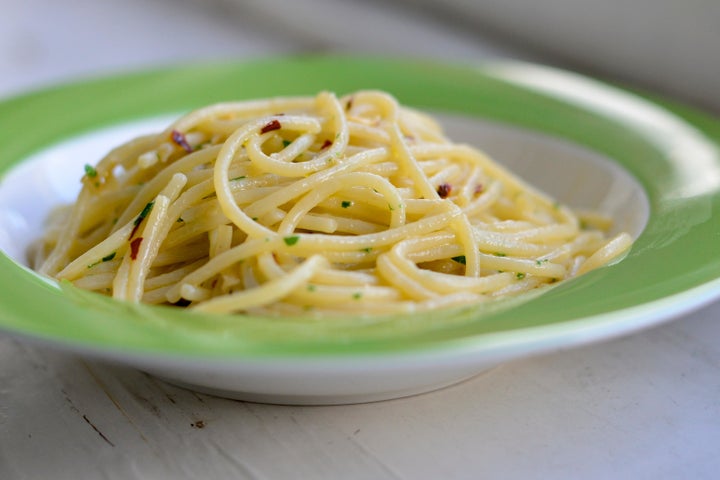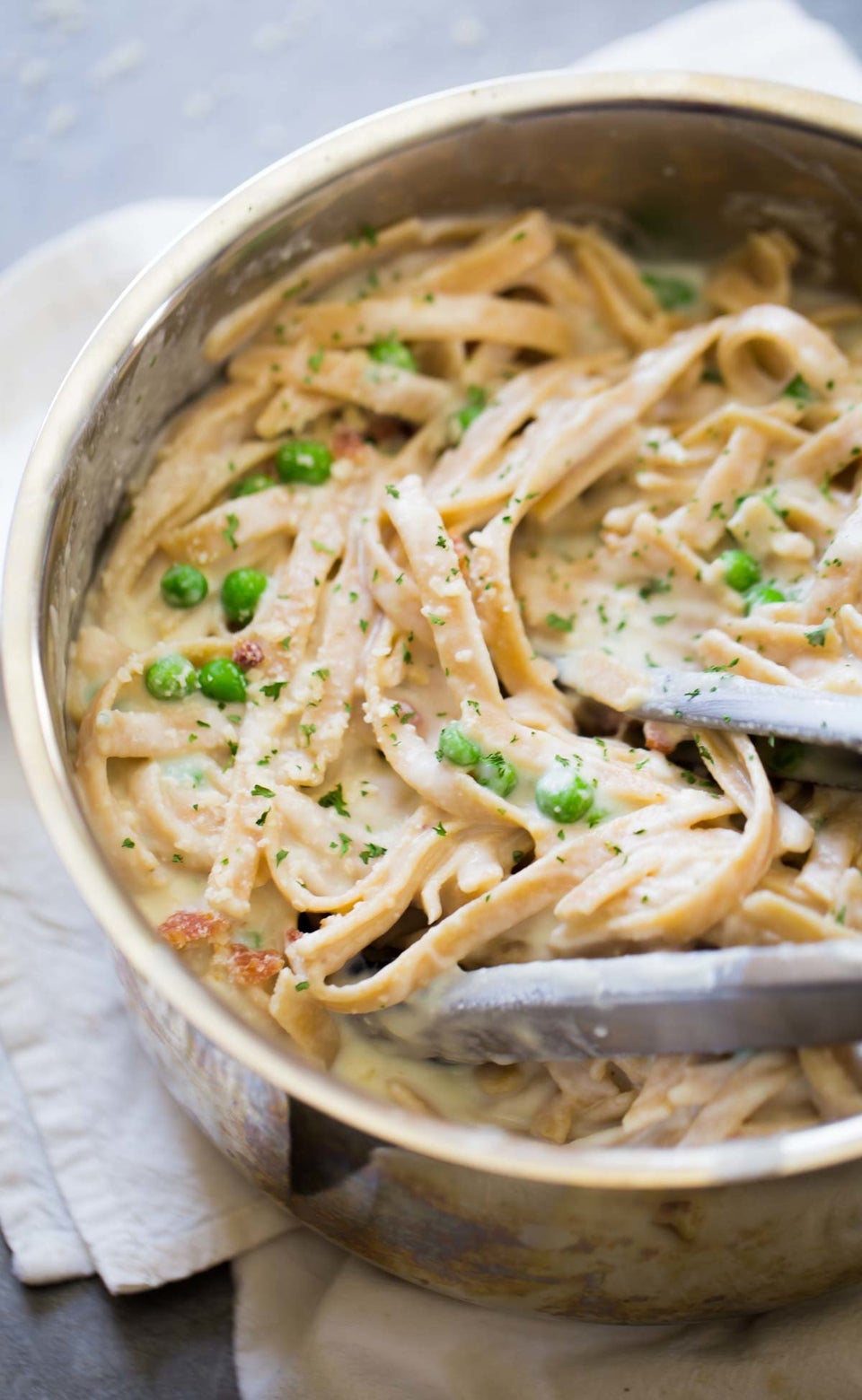
It rarely gets the attention it deserves, but food’s texture is just as important as its flavor. Bubble tea, fried tortilla chips and salsa, panna cotta, Greek salad and a perfect egg omelet are all dependent on this neglected quality.
If you’ve ever pondered why takeout and leftovers are never as good as food served fresh from the kitchen, texture is the culprit. Without texture, everything we eat may as well be homogenized in a blender. Does that sound appetizing?
Let’s talk about a few ways textural variance adds to the pleasure of your eating experiences, none of which are related to flavor.
Texture is the reason expensive spaghetti tastes better than cheap spaghetti.
Have you ever wondered why the cheapest box of spaghetti is around $1 and other brands sell for $5 or $8? They have exactly the same ingredients: semolina and water. So what gives?
Nothing is more exemplary of the phrase “time is money” than the world of dried, boxed pasta. Dried pasta, or “pastasciutta,” is often extruded from dies. The cheapest brands use Teflon in their dies, which enables them to push more dough through the die faster and produce more pasta in less time.
If you closely examine low-cost pastas, you’ll notice that they are almost shiny and incredibly smooth ― that’s the work of the Teflon die. To save even more time and produce large quantities of pasta, mass manufacturers then quickly dry the pasta, sometimes for only a few hours, before boxing it and shipping it.
The result is a textural disaster. The smooth pasta never fully marries to the sauce, and the quick dry time requires a quicker cook time, which in turn minimizes the window of perfectly cooked, toothsome al dente noodles to just a few seconds long. Further, even if you are lucky to nail the “al dente,” the pasta will slowly wilt in the sauce. And don’t even think about eating it the next day. You’ll find pasta that’s swollen to twice the size it was the day before, melting like baby food when bitten.
If you’ve always struggled with achieving al dente pasta, try buying a more premium brand. They’re extruded though brass and bronze dies, which create a rough skin on the pasta. When you look at the box, these more artisan pastas aren’t shiny, but matte and powdery looking. These almost microscopic imperfections grip the sauce better. More often than not, a traditional bronze-extruded pasta will also be dried for a longer time, too, resulting in a longer boil time, and also a more robust main event that holds its shape and texture much longer than the everyday stuff. The manufacturing downside is a slower assembly line. Time is money, and money buys texture (at least in the pasta world).
A great example of this is spaghetti aglio e olio, a dish of perfectly cooked spaghetti dressed with a simple garlic and oil mixture. It’s not just the garlic-flavored olive oil that makes me love spaghetti aglio e olio. It’s the 20 or so individual textural events that occur between my teeth as I bite down on a forkful of twirled, perfectly cooked spaghetti and feel the resistance of each of their semi-raw centers.
Silvano Marchetto of the once celebrity-ridden but now shuttered DaSilvano once called this “the salt of the pasta.” Imagine a wire of salt running through the center of a strand of spaghetti: When you bite it in half, you can see that salt-like dot in the very center of the cross-section. This is what makes spaghetti exciting ― a textural spot so small it’s the size of a grain of salt.
Ben & Jerry’s nails the texture game because ― surprise! ― Ben has almost no sense of smell.
Looking for more textural inspiration, I rang my friend, recipe and video creator Jen Phanomrat, and asked what texture meant to her. She was blunt: “If I’m not feeling and sensing different things, it’s a sad meal. But when there are lots of different ingredients, then I’m actively thinking about what I’m eating and that’s a good thing.”
She also told me that part of the success of Ben and Jerry’s ice cream was their mass production of “chunks” and “swirls.” These came to be because co-founder Ben Cohen has almost no sense of smell, and added texture and strong flavors so he could enjoy ice cream.
The enjoyability of many other of your favorite foods are almost completely reliant on texture, as well.
Ever wonder why takeout sushi isn’t so great? It’s the textural decline that causes it to expire quickly, and this is particularly true with anything containing nori seaweed. When dining at a sushi handroll bar, dine at the bar. This is the ideal (and frankly the only) way to eat handrolls. The chef will personally hand each one to you as she makes them, ensuring the freshest roll possible.
You may scoff at the idea of eating it immediately: What difference could 10 minutes make? Everything, in fact ― two minutes is the whole lifespan of a handroll, in my professional tests. Toasted nori becomes soggy from the warm rice, and other moist fillings in a matter of seconds. Plus, when immediately eaten, the cool fish and the warm rice are just as satisfying as the snap of ideally prepared nori.
So, the next time you’re eating something wonderful, ask yourself if texture is playing a fundamental role in how much you’re enjoying your meal.

Frankie’s Spaghetti Aglio e Olio
Serves 1: Double it for two, but the texture suffers if making for three or more due to the extra mass of the spaghetti and a larger carryover cooking time as a result.
Ingredients
- 1/4 pound spaghetti
- Extra virgin olive oil
- 3 to 5 garlic cloves, thinly sliced
- 1 tablespoon dried chili flakes (or to taste)
- 1/4 to 1/2 cup pasta water
- Plain breadcrumbs
Instructions
- Bring a large pot of salted water to a roaring boil, add spaghetti, aim to cook 2 minutes less than the recommended cooking time, if there are two times, cook 1 minute less than the “al dente.”
- In a saute pan, heat the olive oil and place the sliced garlic in the oil. Be very careful to not burn the garlic.
- Remove the pan from the heat completely and add the red pepper flakes. Stir well so the chili flakes and the garlic infuse the oil.
- Turn the heat back on low under the saute pan. Add the pasta water and pasta, and saute quickly for the aglio sauce to coat the spaghetti. Taste for texture. If pasta is too firm, continue to sauté in pan with a bit more water and lots of mixing.
- Sprinkle with bread crumbs and serve hot!

